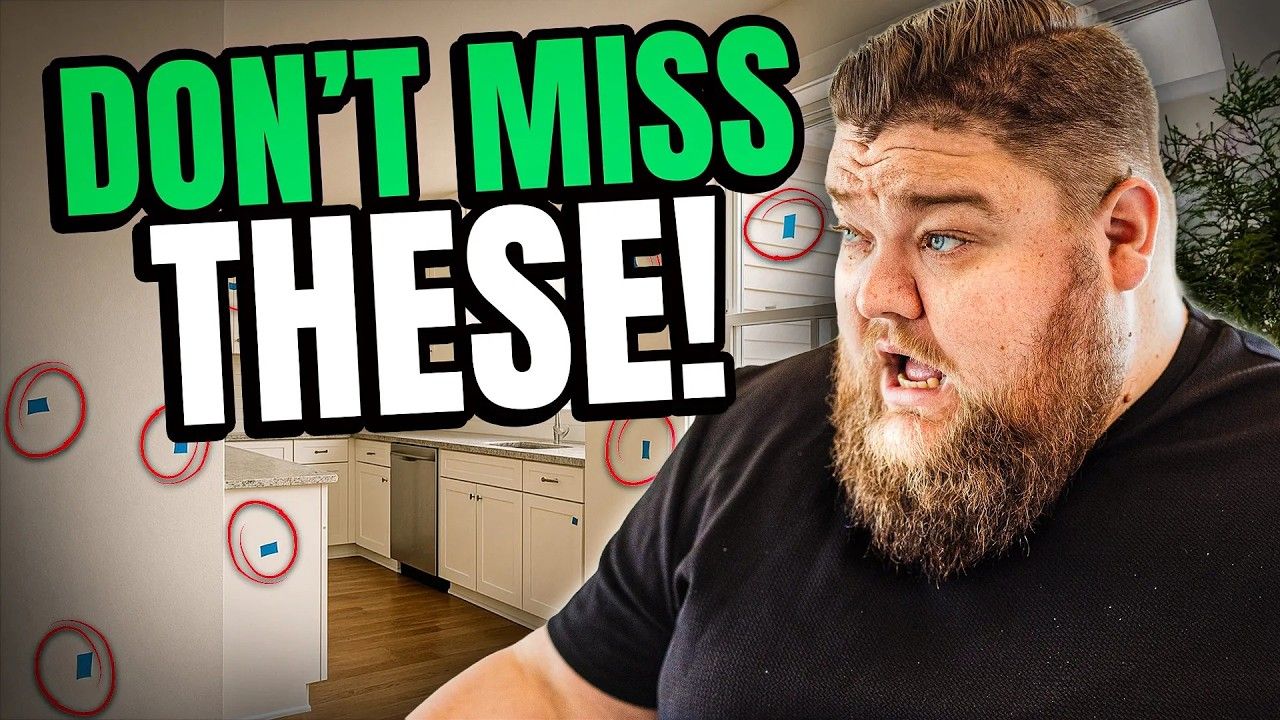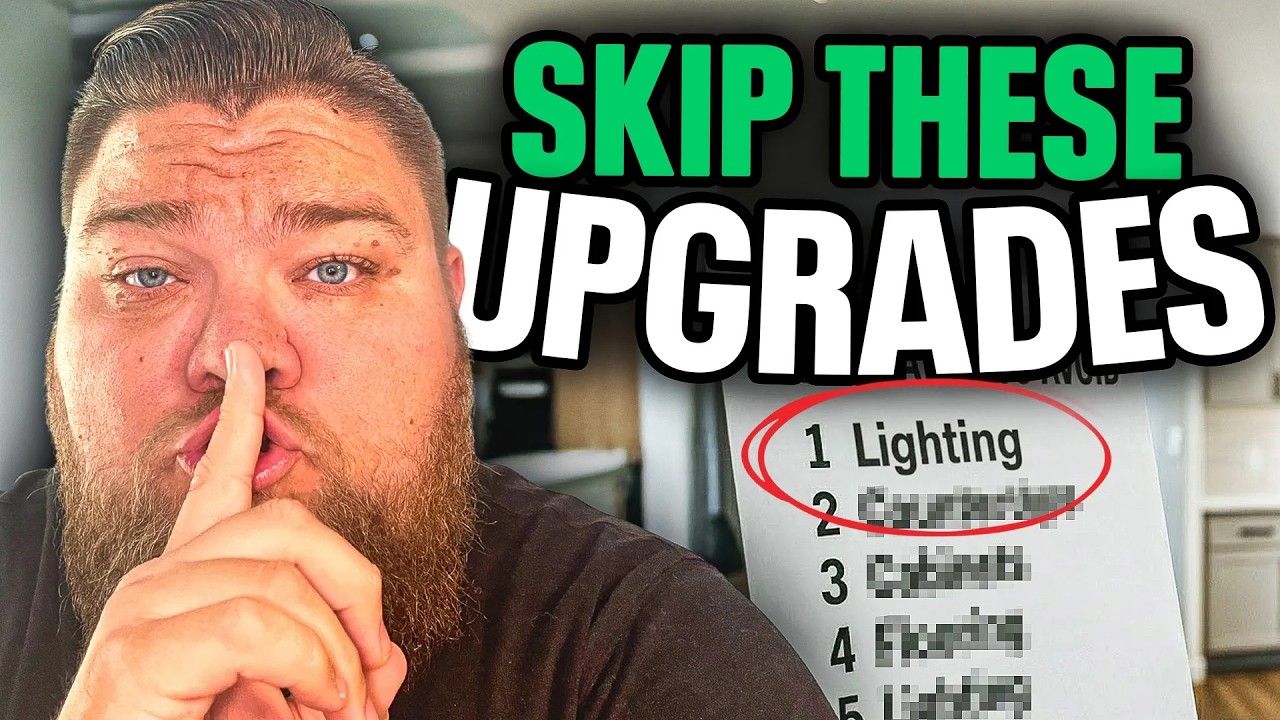New Construction Homes in DFW’s BEST School Districts (…It’s NOT Prosper or Frisco)
Hey — I’m Zak Schmidt, and if you follow me you know I sell new construction homes in DFW and help families make practical choices when they’re buying a new build. I just dug into the Texas Education Agency’s 2024–25 report cards for every district in the state, and wanted to walk you through what actually mattered on those report cards, which districts scored best and worst in the Dallas–Fort Worth area, and most importantly: what it will cost you in new home pricing to get your kids into those schools.
Throughout this post I’ll be candid — I’m married to an elementary school teacher, I spend my days helping people buy new construction homes in DFW, and I’m the person you’ll call when you want to weigh school quality vs. square footage vs. commute vs. price. I’ll explain the TEA scoring system, give you the 10 lowest- and highest-rated districts in the DFW metroplex, show real examples of new construction homes (price ranges, cheapest new single-family options, and a few shockers at the high end), and give practical guidance for families trying to make smart decisions.
Table of Contents
- Why This Matters (and Why the TEA Score is Only One Piece of the Puzzle)
- Quick Primer: How to Use This Guide
- DFW's Lowest-rated Districts (Brief Overview)
- Honorable Mentions That Didn’t Crack the Top 10
- How Much Does It Cost to Get Into These Districts With New Construction?
- Top 10 Best-rated School Districts in DFW (TEA 2024–2025) — and What New Construction Costs
- Number One in DFW: Highland Park ISD (96/100)
- Honorable Mentions and Districts I Personally Watch for Value
- How I Evaluate Trade-offs When Clients Ask About School Districts
- How to Research Districts and New Construction Options Yourself
- Negotiation, Incentives, and Timing in the New Construction Market
- FAQs About New Construction Homes in DFW
- Final Thoughts — Balancing Heart, Head, and Spreadsheet
Why this matters (and why the TEA score is only one piece of the puzzle)
When you start searching for new construction homes in DFW, one of the first filters many buyers use is the school district. That’s totally logical — for most parents school quality is a top priority. But the way the TEA calculates ratings matters a lot for how you should interpret those results.
Here’s the short version: the TEA rating is determined using three categories — Student Achievement, School Progress, and Closing the Gaps. Student Achievement and School Progress together make up 70% of the final rating; the remaining 30% is Closing the Gaps. For elementary/middle campuses, Student Achievement heavily depends on STAAR (the state-mandated tests). For high schools, graduation rates and college/career readiness are also part of the picture.
Let me be blunt about STAAR: as someone who’s married to a teacher, I’ve seen the good, the bad, and the ridiculous about how STAAR gets used. STAAR is a data point. It’s useful for certain comparative purposes — but it’s also biased by funding flows, testing policy, and how districts focus resources. A district can be doing incredible work for students and still score lower because of testing outcomes relative to demographics. That’s why, when you’re shopping for new construction homes in DFW and using school ratings as a factor, you should treat the TEA score as a starting point — not the final verdict.
What TEA’s categories actually measure (quick breakdown)
- Student Achievement: STAAR scores (elementary/middle), plus graduation & college/career readiness for high school.
- School Progress: How students perform on state tests over time and how that performance compares with similar schools (economic disadvantage factored in).
- Closing the Gaps: How well schools lift scores for subgroups — special education, English learners, economically disadvantaged, etc.
So: TEA scores give you measurable outputs. But there are other, equally important inputs: parent involvement, extracurriculars, teacher quality and retention, funding, program offerings (like AP, IB, vocational tracks), athletics, and fine arts. All those things shape your child’s experience — and most of them are not captured fully by a single TEA letter grade.
Quick primer: How to use this guide
I’m going to lay out the lowest-scoring districts in DFW first, then move into the top 10 highest-rated districts in the metroplex — and for every district I’ll show what it would actually cost you to buy brand-new and get your kids into that district. Why? Because new construction homes in DFW vary by thousands, even hundreds of thousands, of dollars depending on the district. That matters more than a single grade when you’re budgeting.
One important note before we dig in: most of the districts that made the top 10 are smaller districts. That’s a trend — smaller districts often have more consistent scores and less demographic variance across campuses, which can help with the metrics TEA measures.
DFW’s lowest-rated districts (brief overview)
TEA runs grades on an A–F scale. In DFW, the lowest ten districts all landed in the 60s (think D to D+). I don’t want to spend a ton of time here — the goal is to point out what’s happening and where to do more digging if you’re considering these areas. Here’s the list of the lowest scoring DFW districts in that release:
- Lake Worth ISD — lowest in the DFW top-10-lowest list (low 60s)
- Gainesville ISD — tied in the low 60s
- Greenville ISD — tied in the low 60s
- Bridgeport ISD
- Commerce ISD (tie)
- Kemp ISD (tie)
- Poolville ISD (tie)
- Venus ISD (tie)
- Randle ISD (tie)
- Corsicana ISD (tie)
Those scores range roughly from the low-60s to high-60s. Historically, districts in this range have pockets of great schools and programs — but they also have systemic challenges that show up on standardized measures. If you’re considering affordability and new construction homes in DFW, several of these areas will offer the lowest sticker prices — but be sure to dig deeper into campus-level performance and community support before making a long-term decision.
Honorable mentions that didn’t crack the top 10
Before I jump to the top-ranked list, let’s talk about a few big-name districts that didn’t actually make the top 10, because people ask about them constantly:
- Frisco ISD — Scored a 90 out of 100 and still rated an A. Frisco is huge: ~65,000 students, 14.6 students per teacher. It just fell short of the top 10 because of how TEA measures across the metroplex and because the top 10 skew smaller.
- Prosper ISD — Also notable: a 91 out of 100. Prosper is big in new construction headlines, but again it sits just outside the top 10.
- Celina — Celina scored an 87 and is growing fast; it was close to the top tier and may move up as it matures.

If you search for "new construction homes in DFW" online, a lot of folks will instinctively look at Frisco and Prosper — and for good reason. Those areas have excellent reputations and lots of new homes. But the TEA list includes lesser-known districts that are often overlooked — and some of those are delivering A-level scores while offering lower entry prices for new construction homes in DFW.
How much does it cost to get into these districts with new construction?
Okay — now we get to the fun part that most people want: actual pricing. I filtered the MLS for brand-new (new construction) homes only and looked for the least expensive single-family detached option in each district, plus a peek at the most expensive if you want to dream big.
Frisco ISD pricing snapshot
Frisco ISD — rated 90/100 — had roughly 147 brand-new homes on the MLS when I pulled the data. The absolute cheapest new listing in Frisco was a townhome for $445,000 (not a detached single-family). If you want a single-family detached brand-new, your cheapest was around $574,000 in Mustang Square. At the top end, custom homes hit $5.3 million.
So if your search term is "new construction homes in DFW" and your priorities are Frisco schools + a detached yard, expect to start north of $550k for a new house — more likely south of $700k for better lot sizes and builders.
VIEW HOMES FOR SALE IN FRISCO, TEXAS
Prosper ISD pricing snapshot
Prosper rated 91/100. I found over 200 brand-new matches in Prosper. Cheapest brand-new single-family detached homes in some Prosper neighborhoods started in the low $400,000s — e.g., a 2,000 sq ft 3-bed home in Sutton Fields around $424k when I checked. The top end stretched to $3.4M for custom and model homes in Highland/Bristol Lakes areas.
Prosper and Frisco are headline-grabbing, but there's a meaningful premium compared to many of the smaller districts on the TEA top 10 list — which leads us to the best-rated districts that might be more affordable.
VIEW HOMES FOR SALE IN PROSPER, TEXAS
Top 10 best-rated school districts in DFW (TEA 2024–25) — and what new construction costs
Below I’ll go district-by-district, from the lower end of the top 10 to the top-rated district. For each one I’ll give the TEA score, general location on the DFW map, approximate student enrollment (when I called it up), and a real-world example of what it would cost you to buy new construction homes in DFW and be zoned for that district.

Tie for #9 (several districts with similar scores — 92/100)
These districts all rated 92 out of 100 in the TEA release. They’re mostly smaller and some are out on the fringes of the metroplex, which is part of why you’ll find different price dynamics there.
- Alto ISD (92) — West side of Fort Worth. Smaller district (~8,300 students). New construction options are limited but you can find entry points in the $340s–$450k range for smaller new homes and jump to $950k+ for acreage and larger newer builds.
- Graford ISD (92) — Very far west. If you’re OK with country living and long commutes, you’ll find different price points, including more acreage options — think lower base prices but trade-offs on commute.
- Argyle ISD (92) — Northern Fort Worth area (Argyle, Northlake, Justin). Entry new construction was around the $414–$505k band in Vintage Village and Harvest; custom and luxury jump substantially higher.
- WY ISD (92) — Eastern Dallas side, between Rockwall, McKinney/Allen corridors. This one surprised a few people — rating is solid and there are neighborhoods like Hillstead where new Highland and other national builders have homes in the $430k+ range.
- Melissa ISD (92) — Northern corridor on 75; growing fast. New entry-level new construction is mid-$300k–$500k depending on builder and neighborhood.
VIEW HOMES FOR SALE IN MELISSA, TEXAS
Across these districts, the pattern is: smaller district + high TEA score = a chance to get into better-rated schools for less money than Prosper/Frisco — but with trade-offs like commute, limited retail, or fewer builder options. If you want brand-new and lower sticker price, these are the places you should be researching.
Tied for #6 and #5 (score: 93/100)
- Palo Pinto ISD (93) — Very small, out toward the west. New construction is pretty thin here.
- Coppell ISD (93) — Coppell sits in the mid-cities, near the airport and Grapevine area. There are fewer new communities; you’ll usually be looking resale or high-end infill.
- Sunnyvale ISD (93) — This one’s personal for me — my wife teaches here. Sunnyvale is small (about 2,300 students), land-locked between Garland and Mesquite, and close to Dallas. Expect new construction priced higher — often $700k–$1M+ for new homes here because of lot sizes and scarcity.
For buyers focused on walkability to Dallas or a short drive to downtown, Sunnyvale and Coppell are attractive but pricier because supply is limited. If your search term is "new construction homes in DFW" and you want proximity to downtown + top schools, be prepared to pay a premium.
Top tiers — 94 and 95 scores
- Huckabay ISD (94) — Tiny (a few hundred students). Way out in the rural fringe. It’s interesting that TEA includes some of these fringes in the DFW list — they perform well but aren’t always practical for daily commutes.
- Gainesville/Civils Bend area (94) — On the periphery; again strong scores but location matters.
- Lovejoy ISD (95) — Near Allen. Small (around 4,000 students), excellent reputation. New construction is rare and resale is often in the $800k–$1.5M+ zone depending on lot and home size.
- Carroll ISD / Southlake area (95) — Carroll ISD (Southlake) is a rightfully famous district: excellent academics + athletics. New construction entry points are generally many hundreds of thousands of dollars — least expensive new listings when I checked were in the $1.99M range for newer construction, and top tier went to $11M.

Carroll ISD and Lovejoy are where many affluent families want to be. If your budget supports "new construction homes in DFW" at the $1M+ level, these districts reward you with consistently high academic outputs and strong community offerings.
Number one in DFW: Highland Park ISD (96/100)
No surprise here: Highland Park ISD topped the TEA ratings for DFW at 96 out of 100. HP is in the heart of Dallas, a small district with about 6,300 students and an average 13.8 students per teacher. Their school progress, student achievement, and closing-the-gaps metrics were all top-tier.
What does that mean for new construction buyers? Highland Park is an urban, high-cost area. At the time I checked new construction, there were only about a dozen brand-new builds listed in the district — the cheapest new build I found was around $3.4M; other brand-new homes ran north of that and into the $8–9M range. If your dream is new construction homes in DFW in Highland Park: dream big and plan for a multi-million-dollar budget.
Honorable mentions and districts I personally watch for value
Beyond the official top-10 list, there are districts that didn’t quite rank A+ but are worth watching from a value and growth perspective — especially if you’re trying to balance "new construction homes in DFW" with price and growth potential.
- Rockwall ISD — Scored a solid B (just missed an A). Rockwall County has attractive tax rates, a lot of growth, and entry-level new construction in the $300k–$500k range for some subdivisions. Great option for buyers who want lakeside access and good schools without Dallas price tags.
VIEW HOMES FOR SALE IN ROCKWALL, TEXAS
- Royse City ISD — Lower TEA score (~77) but it's a market I’m watching. Lots of growth is coming; a buy-in today could benefit from appreciation as infrastructure and schools expand.
VIEW HOMES FOR SALE IN ROYSE, TEXAS
- Community ISD (Leon, Josephine, Nevada) — Small now but seeing town hall-level conversations about major future growth (projected jump to 15–20k students in a decade). For buyers early in the curve, that can be an opportunity: lower sticker prices and potential appreciation as schools expand.
VIEW HOMES FOR SALE IN NEVADA, TEXAS
- Mansfield/Other southern suburbs — These have mixed scores but lots of inventory and affordable new construction options that appeal to families wanting space and value.
VIEW HOMES FOR SALE IN MANSFIELD, TEXAS
These honorable mentions matter because a smart buyer searching for new construction homes in DFW can often get more house, larger lots, and better value in fast-growing non-headline districts — especially if you’re willing to accept longer-term school improvement or a 5–10 year growth trajectory.
How I evaluate trade-offs when clients ask about school districts
When clients come to me ready to buy new construction homes in DFW, the conversation usually covers:
- Budget — what can they realistically afford for new construction vs. resale.
- School priority — is the district a must-have, or is it one of several priorities?
- Commute — how long is too long for work? Are there remote or hybrid options?
- Builders and lot sizes — national builders vs. local builders, pace of delivery, and quality.
- Future growth and resale potential — how the district and neighborhood are expected to evolve.
Here’s an example of how that trade-off plays out in a real client scenario:
Client A: Young family, wants A-rated schools, needs something under $650k, willing to commute 30–45 minutes. We look at smaller top-rated districts like Melissa or Argyle and find new construction homes around $414k–$525k — good schools, newer neighborhoods, and reasonable commute to the client’s office.
Client B: Same budget but wants shorter commute (20 minutes) and big yard for kids. Frisco and Prosper are attractive for the commute/amenities, but you’ll spend more for a detached, quality-lot new home. If the school must be A-rated and commute shorter, families often have to pick a smaller, near-Dallas district with higher price points — or accept resale in higher-tier districts.
Builder quality matters — don’t buy a price tag alone
One of the points I make in my videos and in one-on-one meetings is this: when you search for new construction homes in DFW, don’t just look at the price. Look closely at builder quality. Some national volume builders will give you affordable entry prices but deliver finishes that aren’t durable long-term. That matters for resale and satisfaction. Look at the builder’s standard inclusions, lot sizes, HOA rules, and the pace at which they’re adding neighborhoods in the district.
If you want my quick shortlist of builders I generally respect for consistent product quality and after-care in this market, reach out — I’ll give you straight answers based on neighborhood and product line.
How to research districts and new construction options yourself
Want to start on your own? Here are my practical, step-by-step recommendations for pairing school research and the new construction market:
- Start with txschools.gov: Look up district report cards, download the pdfs, and examine the Student Achievement, School Progress, and Closing the Gaps sub-scores. Screenshot campus level results for schools you’re specifically interested in.
- Dig campus-level data: A district score can hide wide variance across elementary campuses — check the exact campus your prospective address will feed into.
- Filter the MLS for brand-new construction: If your priority is new construction homes in DFW, filter for “new construction,” single-family detached (if you need a yard), and sort by price. Look at the least expensive detached option to set your minimum budget in a district.
- Check builder pages and builder reviews: Cross-check the models and plans you like with builder reputation and what’s included standard versus as an upgrade.
- Visit neighborhoods on weekends: Drive through at different times of day. Schools, community centers, and traffic patterns tell you a lot.
- Talk to parents and teachers: Neighborhood FB groups, Nextdoor, and PTA pages are honest places to learn about day-to-day life in a district.
If you want to be efficient about it, tell your agent your must-haves — top-tier district, max commute, price — and have them pre-screen neighborhoods and builders. We do that every day for people buying new construction homes in DFW.
Negotiation, incentives, and timing in the new construction market
Here’s the real advantage of focusing on new construction homes in DFW now: builders still have incentives. Those incentives fluctuate by community, builder, and time of year. You can sometimes get price reductions, upgrades, or help with closing costs. For value-conscious buyers, a few strategies work well:
- Shop spec homes late in the builder’s fiscal quarter: Builders often have sales targets and may be more flexible.
- Consider inventory homes: These are already built; you may get better negotiation than a buyer trying to customize everything.
- Bundle requests: Ask for upgrades that matter (kitchen appliances, flooring) rather than small cosmetic items.
- Use builder incentives thoughtfully: Sometimes a lower price vs. higher closing cost credit is a better long-term choice for appraisal and resale.
We help our clients analyze incentives, lender rates, and timelines so they can make the most informed decision. If you want help, that’s what our team does every day.
FAQs About New Construction Homes in DFW
How should I weigh TEA scores when looking for new construction homes in DFW?
TEA scores are a useful starting point for assessing school quality, but they’re not everything. Use them to shortlist districts, then dig into campus-level performance, extracurriculars, teacher retention, and neighborhood fit. Remember STAAR heavily influences TEA scores; if a district has great programs but demographics make tests harder to move in the short term, that nuance won’t always show up in a single grade.
Which top-rated districts are most affordable for new construction homes in DFW?
Some of the smaller A-rated districts like Melissa, Argyle, and WY ISD often have more affordable new construction entry points than headline areas like Highland Park, Carroll, or Lovejoy. You can find detached new homes in the low-to-mid $400k range in some of these smaller A-rated districts, while top districts near Dallas’s core commonly start much higher.
Is it better to buy new construction homes in DFW or resale if I want top schools?
It depends on your priorities. New construction offers modern layouts, energy efficiency, and fewer immediate maintenance needs. But supply near top urban districts (HP, Carroll, Lovejoy) is limited, so resale is often the only option there. In many growing A-rated fringe districts, you’ll find ample new construction. Evaluate resale vs new on a neighborhood-by-neighborhood basis.
How much should I budget for new construction homes in DFW if I want an A-rated district near Dallas?
If your priority is proximity to Dallas + top-rated schools, plan on a premium. Highland Park, Lovejoy, and Carroll will often push you into the $1M+ range for a detached new home. If you’re flexible on commute and want to stay below $700k, target smaller A-rated districts in northern or eastern suburbs.
Where can I find the TEA report cards?
Go to txschools.gov and search report cards for 2024–2025. You can pull district and campus-level PDFs, view sub-scores, and use that to compare districts you’re considering for new construction homes in DFW.
Final thoughts — balancing heart, head, and spreadsheet
If you’re reading this because you want new construction homes in DFW and you’re trying to decide where to buy, here’s my direct advice:
- If schools are the #1 priority: Decide whether proximity to Dallas or an A-rated district is non-negotiable. If proximity matters more, be prepared to stretch the budget for small, high-demand districts. If budget matters more, look at smaller A-rated districts farther out where new construction is significantly more affordable.
- If getting the most house for your money is the focus: Consider fast-growing districts that have room to mature (Community ISD, certain Rockwall-adjacent neighborhoods, Royse City). You can get more lot, more square footage, and newer product for substantially less, with the expectation that schools will improve as the area grows.
- Always check the campus feed for the specific address — district A vs. campus performance can change your outcome.
Motherhood and apple pie aside, there’s no single right answer — only the right answer for your family’s priorities and budget. The TEA report cards are one helpful tool among many. Combine them with careful MLS filtering for “new construction homes in DFW,” builder quality checks, and a realistic commute tolerance and you’ll land somewhere that actually fits you.
If you want help sorting through the options, I’d love to talk. Whether you’re buying a $400k starter in a growing A-rated district or a $3M Highland Park build, I can run numbers, find neighborhoods with the right builders, and connect you with preferred lenders and inspectors who understand new-home specifics in our market. My team and I do this all the time.
Thanks for sticking with me through this deep dive. If you want the PDF of the districts I referenced, or a customized list of new construction homes in DFW that match your budget and school priorities, reach out — happy to build that for you.
Call/text me at 469-707-9077. You can also book a time in my calendar .
Download Your FREE Ultimate New Construction Buyer 7 Day Crash Course
Quick recap: actionable next steps
- Go to txschools.gov and pick 3–5 districts you like based on TEA scores.
- Filter the MLS for "new construction homes in DFW" and limit to single-family detached if you want a yard.
- Compare the cheapest detached new home in each district as your baseline budget number.
- Visit neighborhoods, call the builder, and check recent incentives and price reductions.
- Decide your non-negotiables (school vs. commute vs. yard) and pick a long-term plan.

Zak Schmidt
From in-depth property tours and builder reviews to practical how-to guides and community insights, I make navigating the real estate process easy and enjoyable.













